The Reducing Emissions from Deforestation and Degradation (REDD) mechanism is supposed to be the great hope for saving the world’s forests. Advocates say REDD — now known as REDD+ — could finally create financial incentives for keeping forests standing instead of chopping them down for timber, pulp and paper, cattle, palm oil, and rubber. At the same time, REDD could generate benefits for the rural poor, while safeguarding biodiversity and other ecosystem services. But the devil is in the details. Ensuring that REDD is properly designed, funded, and implemented means that progress has been slower than some supporters have hoped. A poorly designed REDD may be worse than no REDD at all.
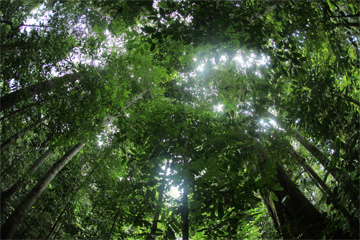 Rainforest in Indonesian Borneo. Photo by Rhett Butler |
So where does that leave REDD now? Mongabay asked John-O Niles, the Director of the Tropical Forest Group, a Lecturer at the
University of California at San Diego in Terrestrial Carbon Science and Policy, and an occasional contributor to Mongabay on climate change policy, for his thoughts on the current status of REDD policy. The Tropical Forest Group recently wrote a report, Justification and Recommendations for a New UNFCCC REDD+ Mechanism. The new report bluntly challenges the United Nations Framework Convention on Climate Change to rapidly create a formal REDD+ Mechanism.
AN INTERVIEW WITH JOHN O. NILES
mongabay.com: How did you get involved with international forest policy?
John-O Niles: I’ve been at this game for almost two decades. It all started in 1992 when I had a quasi-religious experience after throwing up in Nigeria’s Afi
Mountains while tracking monkeys.
mongabay.com: Where do international efforts to reduce emissions from deforestation and degradation stand now? Has there been much progress since Cancun?
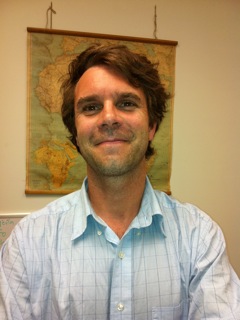 John O. Niles |
John-O Niles: Since Cancun, REDD+ is showing clear signs of a bipolar affliction. Sometimes REDD+ is portrayed with clear momentum and progress: billions of dollars
flowing, new systems for tracking forests and forest carbon, healthy and heated debates about the role of civil society. But in other ways, especially
concerning international negotiations, REDD+ is clearly faltering. Let me give you one example. In Copenhagen in 2009, more than 100 heads of state
decided to immediately establish a REDD+ Mechanism with the intent of mobilizing resources to developing countries to stem deforestation. But since the
Copenhagen talks, the United Nations Framework Convention on Climate Change (UNFCCC) has yet to build a REDD+ Mechanism. Many key decisions are not
being addressed. For example, what constitutes adequate social safeguards? What are the correct levels of technical requirements for different phases
of funding? What are the baseline rates of deforestation? How will funds and actions be tracked? Since Cancun, there have been more efforts to flesh
these issues out, but there is no coordinating body with the authority to make decisions.
mongabay.com: We heard some big numbers being pledged by rich countries–is any of this money actually flowing yet? If not, what is the hold up?
John-O Niles: Some of the money is flowing. All in all, donor governments pledged around $5 billion for REDD+ for the years 2010 to 2012. Some of these new funds are
in fact making their way to developing countries. There are ongoing debates about how these funds are being directed, whether the funds are additional,
and whether they are having an impact. I think overall, donor countries are doing a good job trying to honor their REDD+ pledges given the global
economic situation. But there can always be more transparency, more coordination and more rigorous efforts to get REDD+ funds deployed rapidly and
equitably to where they make a difference. National government REDD+ programs are necessary, but alone they are inadequate.
mongabay.com: What needs to happen to move REDD+ forward?
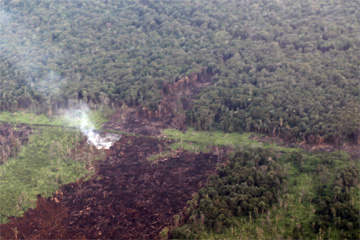 Deforestation in Indonesian Borneo. Photo by Rhett Butler |
John-O Niles: For REDD+ to move forward, one of two things needs to occur. Either the UNFCCC creates and empowers an international REDD+ Mechanism or all the REDD+
initiatives outside the UNFCCC need to better self-organize. I prefer the former option, but I’m increasingly skeptical that the UNFCCC can pull this
off. The Tropical Forest Group recently wrote a report on this subject and submitted it to the UNFCCC. In essence, this report notes that the UNFCCC
has made dozens of important decisions on REDD+ but has not yet done what is needed. And that is to create a UNFCCC REDD+ Mechanism. It’s like dating
someone for five years. At a certain point you should probably get married or break up. I don’t mean to be flippant, but REDD+ has enjoyed broad and
deep support in the UN process. The UNFCCC needs to pull the trigger soon or it may become a hindrance rather than a catalyst for more and better REDD+
programs, policies and projects.
mongabay.com: What does an effective UNFCCC REDD+ mechanism look like?
John-O Niles: In our report, we identify 15 key principles for a UNFCCC REDD+ Mechanism. In essence, there needs to be global agreement and coordination of REDD+
technical guidelines, baselines and the application of safeguards. We think any UNFCCC REDD+ Mechanism absolutely must also bring in efforts already
underway. For instance, national governments are already providing substantial information to bilateral and multilateral REDD+ funds. Another effort,
the REDD+ Partnership, is already identifying costs for REDD+, REDD+ donors, and funding gaps. Still
another group, the Governors’ Climate and Forests Task Force is already coordinating sub-national REDD+
frameworks. To be successful, a new UNFCCC REDD+ Mechanism must build on all the on-going REDD+ efforts.
mongabay.com: REDD+ should be a huge opportunity for forest dependent people–yet they seem to be among its staunchest critics. What went wrong?
John-O Niles: Many forest dependent communities have seen the most egregious impacts of markets. Land stolen, governments corrupted, lives lost, whole cultures
punished. And from the beginning, a key aspect of REDD+ has been to access carbon markets. The Kyoto Protocol fundamentally centers on carbon markets
and was reached through a strident effort at global consensus building. So carbon markets are essential to the Kyoto Protocol and are considered
essential to REDD+. But after Copenhagen’s setbacks, there is serious doubt as to if there will be an international carbon market any time soon. There
are still concerns that REDD+ could be another example of globalization destroying local ways of life. I personally think REDD+ has forced very hard
conversations about local peoples’ rights, land tenure, governance and equity. But there are vocal groups in the UNFCCC process that simply do not like
markets. Full stop. These groups have done a good job of highlighting all the risks of REDD+. They tend to ignore the positive things REDD+ has done
and can do. For REDD+ to work there has to be an absolute commitment to the transparency of the policy process, of national REDD+ programs, and of
finance. Otherwise there will be continued distrust of REDD+ and its market orientation. Most forest dependent communities, at least the ones I’ve
visited, when presented with the full range of potential risks and benefits associated with REDD+, are keen to explore financial payments to maintain
their forests. I’m sure others would rather steer clear of anything to do with carbon. Ultimately, these are choices each community, government and
donor must make. The key thing is that communities should have a choice and that choice should be based on as much information as possible.
mongabay.com: What’s your outlook for REDD+? Is it still possible to correct course?
John-O Niles: The concept of REDD+ will be the dominant paradigm for this generation in terms of global cooperation to stem tropical deforestation. Whether the
UNFCCC will be relevant to this paradigm is uncertain. I think it’s time to consider alternative ways to organize REDD+ in the name of better
cooperation, better safeguards, benefit sharing, and coordinated technical work. If we add up all the effort of REDD+ programs outside the UNFCCC – the
REDD+ Partnership, UN REDD, the World Bank’s Forest Carbon Partnership Facility and the Forest Investment Program, the Governors’ Climate and Forests
Task Force, the commodity roundtables, and other public and private partnerships – there are sufficient resources and an abundance of ongoing REDD+
cooperation. But without a coordinating mechanism, current REDD+ efforts are starting to dissipate and come up with different frameworks. With limited
funds and massive pressures on forests, simply put, the whole sphere of REDD+ needs coordination. I think it’s time to look into a global REDD+
Protocol or Mechanism that is not beholden to the UNFCCC.
mongabay.com: Is it wise to give up on the very process that helped inspire REDD+ in the first place and that also happens to be the largest, most
respected global framework for coordinating climate change policy?
John-O Niles: It’s not ideal, no. But the original REDD proposal, submitted in 2005 by ten countries, explicitly notes two options. One is a REDD+ process under the
UNFCCC. And the other is a REDD+ Protocol outside the UNFCCC. It is now five years later and the world has lost another 50 million hectares of tropical
forests. I think it’s time to recognize the UNFCCC may not be the best option or the best use of time and energy.
Related articles
Can RED Hot California Heat Up A Sedated Cancun?
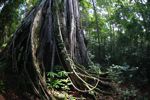
(12/07/2010) In his concession speech after the 2010 mid-term elections, President Obama said that prospects for meaningful U.S. climate change legislation are doubtful and will be for years. With the US and the international community unable to take even modest steps to combat global warming, the State of California has stepped up in a big, big way. Despite record unemployment rates, deficits and unemployment, California voters trounced a measure that would have suspended AB 32, California’s landmark climate change law. California’s AB 32 cap and trade program will soon be the biggest market for compliance emission reductions outside of Europe. In the wreckage of the Copenhagen talks and the new political landscape in America, California is the most dynamic jurisdiction for climate change implementation.
Chaos and the Accord: Climate Change, Tropical Forests and REDD+ after Copenhagen

(04/06/2010) The Copenhagen Accord, forged at COP15 upended international efforts to confront
climate change. Never before have 115 Heads of State gathered together at one
time, let alone for the singular purpose of crafting a new climate change
agreement. Even though the new Accord is still in intensive care, two things
are already clear. First, we have entered an entirely new world. And second,
tropical forests have the greatest potential to breathe life into the new
agreement.
A New Idea to Save Tropical Forests Takes Flight
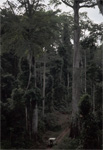
(06/29/2009) Every year, tens of millions of acres of tropical forests are destroyed. This is the most destabilizing human land-use phenomenon on Earth. Tropical forests store more aboveground carbon than any other biome. They harbor more species than all other ecosystems combined. Tropical forests modulate global water, air, and nutrient cycles. They influence planetary energy flows and global weather patterns. Tropical forests provide livelihoods for many of the world’s poorest and marginalized people. Drugs for cancer, malaria, glaucoma, and leukemia are derived from rainforest compounds. Despite all these immense values, tropical forests are vanishing faster than any other natural system. No other threat to human welfare has been so clearly documented and simultaneously left unchecked. Since the 1992 Rio Earth Summit (when more than 100 heads of State gathered to pledge a green future) 500 million acres of tropical forests have been cut or burned. For decades, tropical deforestation has been the No. 1 cause of species extinctions and the No. 2 cause of human greenhouse gas emissions, after the burning of fossil fuels. For decades, a few conservation heroes tried their best to plug holes in the dikes, but by and large the most diverse forests on Earth were in serious decline.